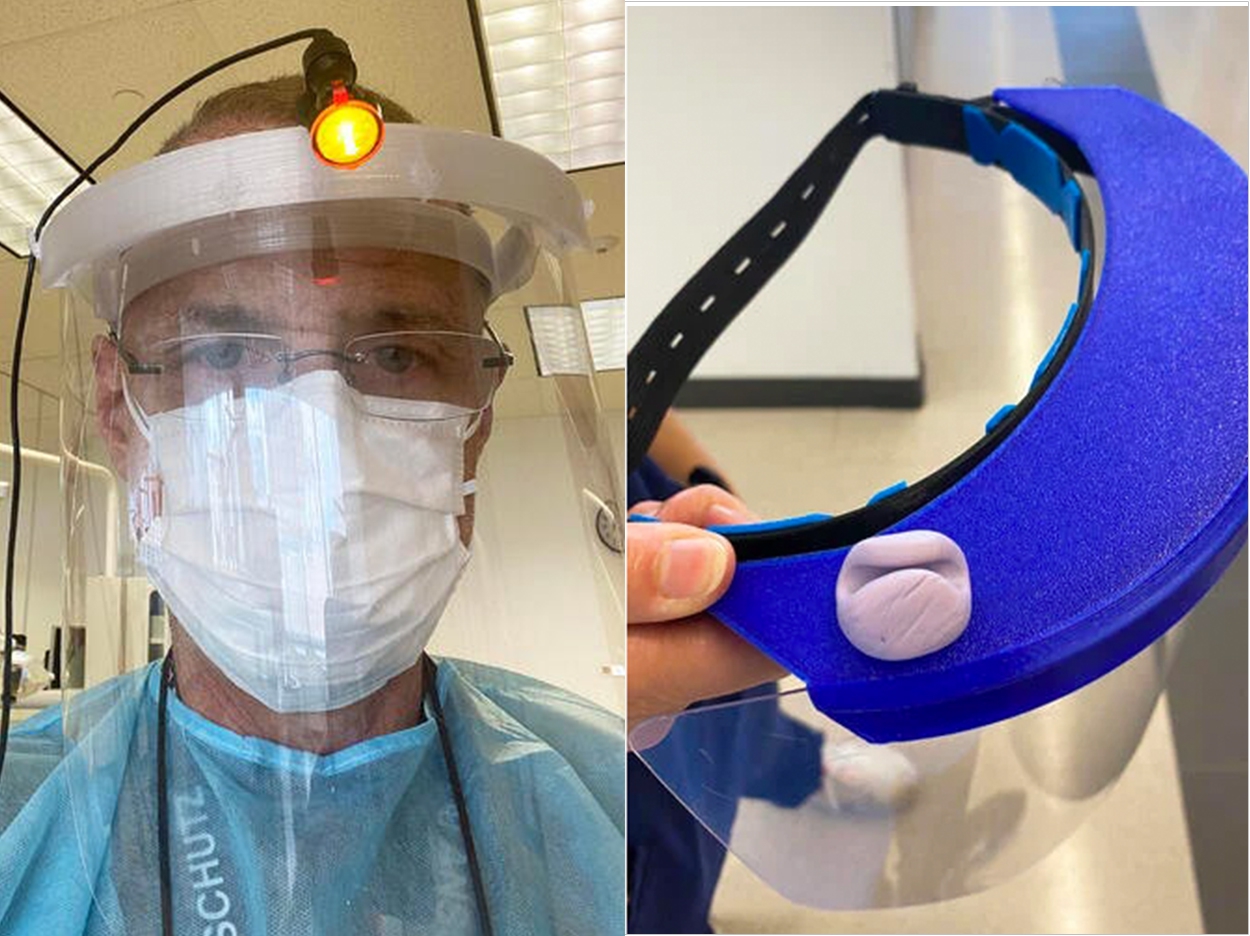
After the University of Colorado School of Dental Medicine (SDM) lab was shut down in March 2020, third-year dental student Alfred Li emailed his mentor, Thomas Greany, DDS, about some ideas he had for a face shield design that could keep their colleagues safe while preventing a personal protective equipment (PPE) shortage that would stall their return to work.
Today, Li and Greany have a face shield that represents the multi-disciplinary innovation that takes place on the region’s top medical campus, SDM said. The design also saved the school a lot of money, SDM added, paring the cost of face shields it had been using from $5 each down to 17 cents per unit.
“It’s nice to identify a problem and solve an issue that’s really relevant to what’s happening in the world and especially in our profession,” Li said. “And even with all these different things that were going on (restrictions, lockdowns, fears of infections), we were still able to collaborate interprofessionally because of technology.”
After Greany found a 3D-printed face shield from Prusa Research, he and Li surveyed faculty and students about what equipment they used. They found that the Prusa design didn’t meet their colleagues’ needs since it required headlamps to be attached inside the shield.
“So they’d have to stick their gloved hands that had just been in someone’s mouth up under their face shield to manipulate their light,” Greany said. “That’s not good.”
Li and Greany then enlisted the help of Inworks, the university’s innovation initiative, and Inworks design engineer Hayden McClain.
“One of the core tenets of our group is this idea of human-centered design and really diving into the needs of creating something that will be functional,” McClain said of Inworks, which has labs on the CU Anschutz and CU Denver campuses. “This project just fell right into our process.”
Using Inworks’ creative staff and top of the line 3D technology, SDM said, McClain implemented modifications allowing headlamp mounting outside the shield and space for magnifying loupes inside the shield and created a prototype. Li and Greany, an SDM clinical assistant professor, then recruited 60 dental students to test the prototype and provide feedback.
“Some people would say, ‘Oh, my head’s too small,’ or ‘I think there should be another strap on it that goes right down the middle of your head to keep it from slipping,’” Greany said, adding that he was impressed with the students’ ingenuity and enthusiasm.
After realizing the plastic head strap was leaving a footprint on their heads after four hours of clinical work, one student suggested using a cushioning commonly used for wrapping dental X-ray components before inserting them in patients’ mouths to soften the inside of the straps.
“It was just cool,” Greany said. “Everybody kind of stepped up and said, ‘Hey, we should try this.’ And the best part of it all is we were spending literally $40,000 in October on face shields. This cut that down to a fraction of the cost. So, it was a nice kind of homegrown solution.”
Inworks used an eco-friendly design that provided more flexibility with the shields, SDM said.
“You can swap out parts and increase the longevity,” said McClain, whose team bumped the shields from one-time use to as many as 30 or 50 uses. “Originally, the dental team asked for about 500 shields to start, but that was in the mindset of these disposable, single-use shields.”
With the exchangeable parts, the school ended up needing fewer shields.
“You can change parts as they break and reduce your waste and reduce your spending per unit,” McClain said. “That was the goal. And it worked out really well.”
McClain, who is now open-sourcing the design for other dental schools to use, said the project required a lot of iteration, with frequent “back-alley” swaps of designs and prototypes because of COVID-19 restrictions and plenty of Zoom work sessions. The project also represents the importance of collaboration between design engineers and clinicians, he said.
“I think it was exciting for both sides. We have a lot of skills that complement each other and, when put together, can create some really amazing projects. We created something of high value that is actually being used and will be used for quite a while,” McClain said.
Li said he has received feedback from peers that they intend to use the shields for certain procedures after the pandemic. With his eye on a career in orthodontics, Li also said the project will propel him into the technology-heavy field.
“My goals are to keep going with these innovative engineering projects and hopefully change dentistry by creating new things that we can use for diagnosis and treatment,” Li said.
Inspiring innovation and providing the technology needed for the future is crucial for medical schools, said Li, adding that he’s thankful for the 3D resources that Inworks and CU Anschutz provide.
“In my mind, it is the future of dentistry, and there are new products coming out every day to support that,” Li said.
Related Articles
WVU Develops Face Shield That Works With Loupes and Headlamps
Face Shields Protect Dental Heroes As They Protect Our Smiles
Partnership Produces Functional Face Shields for VCU Dental Students












